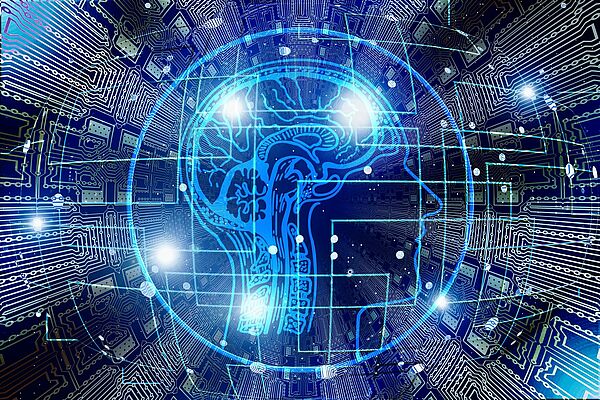Artificial intelligence is on everyone's mind. But what is currently behind it? Where can artificial intelligence methods be used? Which approaches have which effect for companies? Experts from the Institute for Industrial Information Technology (inIT) at the Ostwestfalen-Lippe University of Applied Sciences answered these and other questions at an online workshop as part of the solutions-OWL event program "Digitalization and AI: Key to a new normality in OWL".
Institute Director Professor Volker Lohweg opened the event, which had to take place via web conference due to covid-19, and explained the difference between strong and weak artificial intelligence (AI). Strong AI is generally understood to be all approaches that attempt to map and imitate humans and their processes in the brain. "However, we are still very far away from that. These approaches are still in their infancy, and I can assure you that robots won't be taking over the world any time soon," Lohweg reassured the participants with a wink. Weak AI, on the other hand, is no longer about human thought processes, but about developing targeted algorithms for specific problems, he said. "This is where we then find ourselves in the subject area of machine learning and assistance systems. They help the worker and solve problems," Lohweg continues.
Christoph-Alexander Holst, research group leader at inIT, also asserts that machine learning (ML) methods will not replace human experts: "ML methods can achieve a great amount independently, but humans cannot be removed from the work process." In his talk, he presents concrete application examples from the ITS.ML project, which have been able to testify to the use of ML as helpful. "For example, we used ML in air traffic, with the help of which damaged areas in the outer skin of the aircraft could be detected and repaired," Holst reported on one of the many fields of application of machine learning.
In his speaking time, his colleague Alexander Dicks introduced the AI marketplace, in which inIT is also involved with its expertise. The AI Marketplace is the ecosystem for AI in product creation. "85 percent of production costs are incurred during product creation. There is great potential here for the use of AI to both lower manufacturing costs and reduce development time. So far, industry representatives and AI providers have found it rare and difficult to meet. The AI Marketplace aims to change that," explains Dicks. The project was launched at the beginning of the year and is currently in the first stage of expansion, which includes intelligent matchmaking.
The evening was concluded by inIT scientist Philip Meier with his presentation "Intaglio style transfer - from manual to (almost) automatic". Intaglio is a printing technique which is mainly used for security printing of for example banknotes. Intaglio style transfer is the transfer of an image into an image with Intaglio style, which consists of many fine lines and dots. For a long time, this technique was still done laboriously by hand engraving into a copper plate, and later on a screen. "However, both are still very laborious and there are now only a few people who have mastered these techniques," warns Meier. That's why scientists at the institute are currently in trials to apply machine learning to this application area. "We are trying to partially automate intaglio style transfer using ML. The research is still in its early stages, but we are already seeing some initial successes. This research approach shows an exciting niche application and thus the diversity of the use of artificial intelligence," Meier is pleased to say.
AI can therefore help humans in the future and even now. But the scientists were able to allay one concern in particular for the participants that evening: AI will not be able to completely replace humans.


